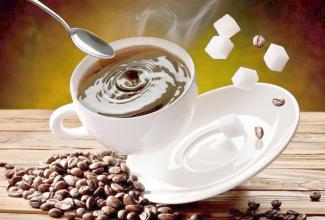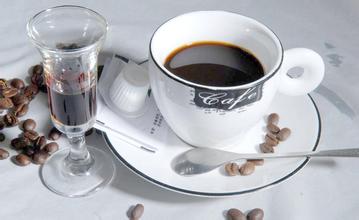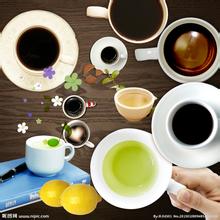Introduction to the flavor and taste characteristics of Hassanda coffee farm in Ecuador with low acidity
The minerals are mainly oil, mainly distributed in Guayaquil Bay, and oil fields are also found in the Amazon Plain. Gold and silver are distributed in Machaki and Saluma and other places. Copper is made in Machaki. There are sulfur mines in the Cologne Islands. In addition, there is iron, lead and so on. Forest area accounts for about 68% of the national area, mostly distributed in the eastern region, rich in valuable wood, such as mahogany and balsam (or Balsa wood). The coast is rich in tuna and shrimp. The port of Guayaquil, a giant turtle and lizard on Cologne Island, is the largest seaport in Ecuador. It faces the Pacific Ocean and backs against Mount Santa Ana. The nearby island of Pune serves as a natural barrier to protect the harbour from storms. There is a wharf in the south, which is more than 900 meters long. Ships from different parts of the world flying various flags are moored in the harbor. The port railway leads to the capital Quito, and highways connect Quito with other cities in the country. Bananas, cocoa, coffee, cotton and other products from all over the country are collected and distributed here. Guayaquil has also played an important role in the history of friendly exchanges between the peoples of China and Ecuador. As early as the 18th century, Chinese clothing, textiles and other goods were shipped to Ecuadorian cities through Guayaquil. In August 1978, the Chinese cargo ship Jialing River arrived here for the first time. Most of the import and export goods of the two countries are transshipped through Guayaquil, the Ecuadorian flag is rectangular, with an aspect ratio of 2:1. The flag is made up of three rectangles connected by yellow, blue and red. Yellow occupies 1 quarter of the flag, while red and blue each account for 4. The national emblem is painted in the central government. Yellow symbolizes the wealth, sunshine and food of the country; blue symbolizes the blue sky, the sea and the magnificent Amazon; and red symbolizes the blood of patriots fighting for freedom and justice. Ecuador has a presidential system. On 26 November 2006, Correa, a candidate of the Sovereign Motherland Movement, was elected president in the second round of presidential elections and took office on 15 January 2007. Immediately after taking office, Coe promoted the convening of the Constituent Assembly. On April 15, 2007, Eritrea decided to hold a Constituent Assembly in a referendum with an approval rate of 81.72%. In September, Eritrea held an election of representatives to the Constituent Assembly, and the ruling party, the Sovereign Motherland Union, won 61% of the seats. In July 2008, the Constituent Assembly adopted the new draft constitution. In September, the new constitution was passed in a referendum with 63.94% of the vote. In October, the new constitution was formally promulgated and implemented. In April 2009, Eritrea re-held presidential, parliamentary and local government elections in accordance with the new constitution, and Correa was re-elected president. On September 30, 2010, large-scale police protests broke out and riots broke out in major cities such as Quito, Ecuador, in protest against the adoption by the National Congress of the Public Service Act, which included provisions for cuts in police and military benefits. President Correa was attacked and was trapped for a time, then rescued with the support of the military, parliament and the international community. On May 7, 2011, Eritrea held a referendum on 10 political and social issues, including judicial reform and media control, all of which were adopted. Since 2012, the political situation in Eritrea has remained stable.
Ecuador is the highest Arabian coffee plantation in the world. Since the coffee tree was first introduced into Ecuador in 1875, the quality of its coffee has remained unchanged for 100 years, especially the coffee harvested in early June every year, which is called "the best coffee in the world". Ecuadorian coffee beans are divided into Galapagos and Segante, both of which have large particles and heavy weight. In particular, the unique geographical conditions of the Galapagos Islands give coffee beans excellent genes that are superior to those of other producing areas, and its high quality comes from the absence of any chemical agents when growing. As the land suitable for Arabica coffee trees in Ecuador is gradually decreasing, Galapagos coffee is more precious espresso was born in 1946, until around 1986, espresso was promoted to the world by Starbucks. The most important feature of "Espresso" coffee is the cohesion of aroma and taste.
Bravo's Italian espresso is blended by Bravo's chief blender of coffee beans from a variety of high-quality coffee farms. Every cup of espresso extracted from Bravo espresso beans is fragrant and golden. Bravo's Italian espresso is suitable for extraction with an Italian coffee machine.
Blue Mountain flavor Blue mountain Flavor
Good Blue Mountain Coffee is extremely expensive because of its low production. It has a moderately sticky texture with a strong creamy and drupe flavor, coupled with floral acidity, which makes people physically and mentally happy after drinking it. Sumatra Mandheling Manning
Manning is produced in Sumatra, Indonesia, Asia. Its thick taste is low in acidity and shows rich fruit flavors. It is loved by coffee lovers in Taiwan.
Bravo Manning is made from 100% Sumatra coffee beans and is suitable for siphon pots and pressure pots.

Important Notice :
前街咖啡 FrontStreet Coffee has moved to new addredd:
FrontStreet Coffee Address: 315,Donghua East Road,GuangZhou
Tel:020 38364473
- Prev

Introduction to Santa Cruz Manor in Ecuador Coffee Flavor and Taste area, which can be made into High-quality mixed Coffee
West coast: including coastal plains and foothills, high in the east and low in the west, generally below 200 meters above sea level, with some hills and low mountains at an altitude of 600 to 700 meters. Belongs to the tropical rain forest climate, the southernmost end begins to transition to the savanna climate. The average annual precipitation decreases from more than 3000 mm to about 500mm from north to south: part of the Amazon basin. Altitude 1200mm 250
- Next

Introduction to San Pedro Manor with a strong flavor of Puerto Rican coffee
Puerto Ricans are the general name of the residents of United States Puerto Rico in Central America and the Caribbean. There are about 3.4 million people (1979). Spanish and English are widely used. More Catholic. The earliest inhabitants of Puerto Rico were Arawak and Caribbean Indians. In 2012, whites of European origin accounted for about 73% of the population, mixed-race people accounted for 23%, and blacks accounted for 4%. There are more than 20,000 Americans and others.
Related
- Does Rose Summer choose Blue, Green or Red? Detailed explanation of Rose Summer Coffee plots and Classification in Panamanian Jade Manor
- What is the difference between the origin, producing area, processing plant, cooperative and manor of coffee beans?
- How fine does the espresso powder fit? how to grind the espresso?
- Sca coffee roasting degree color card coffee roasting degree 8 roasting color values what do you mean?
- The practice of lattes: how to make lattes at home
- Introduction to Indonesian Fine Coffee beans-- Java Coffee producing area of Indonesian Arabica Coffee
- How much will the flavor of light and medium roasted rose summer be expressed? What baking level is rose summer suitable for?
- Introduction to the characteristics of washing, sun-drying or wet-planing coffee commonly used in Mantenin, Indonesia
- Price characteristics of Arabica Coffee Bean Starbucks introduction to Manning Coffee Bean Taste producing area Variety Manor
- What is the authentic Yega flavor? What are the flavor characteristics of the really excellent Yejasuffi coffee beans?

